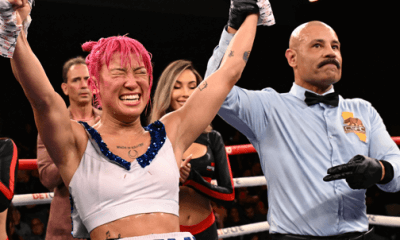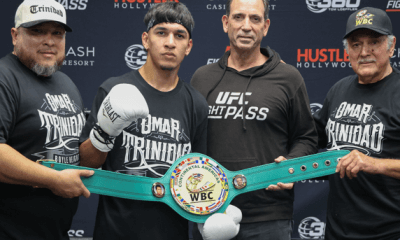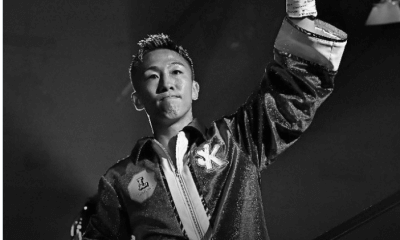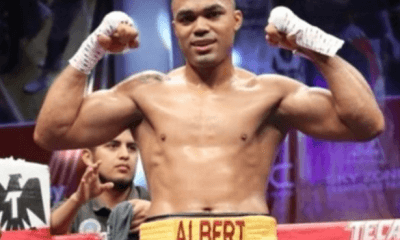Featured Articles
The Hauser Report: A Club Fight Promoter Faces a Choice
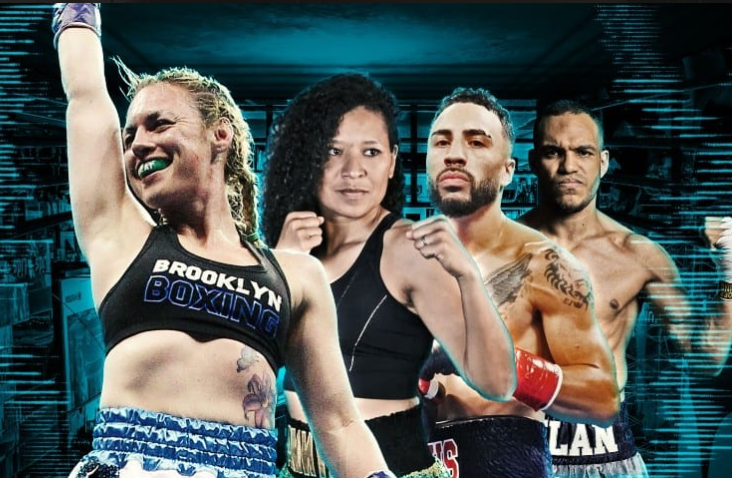
On October 13, 2022, Larry Goldberg made his debut as a professional boxing promoter [https://tss.ib.tv/boxing/featured-boxing-articles-boxing-news-videos-rankings-and-results/74244-the-hauser-report-a-promoters-pro-debut]. Since then, he has promoted two more fight cards, the most recent being on Thursday, February 23. All three of Goldberg’s cards have been at Sony Hall in New York.
Each of Goldberg’s fights this past Thursday night was an A-side vs. B-side match-up with the A-side fighter winning as expected.
The opening bout – light-heavyweight Frederic Julan (12-2, 10 KOs) vs. Decarlo Perez (19-7, 6 KOs, 3 KOs by) – was dreadful. Julan (a southpaw) fought like he was in a sparring session. That was enough to earn a unanimous eight-round decision but not enough to give Goldberg a reason to put him on one of his shows again.
Next, former Mongolian Olympian Tsendbaatar Erdenebat (4-0, 2 KOs) demolished a game but over-matched Giovanni Gutierrez (11-3-1, 6 KOs, 2 KOs by) in a scheduled six-round lightweight bout that lasted until the 1:46 mark of round three when Gutierrez’s corner wisely stopped the carnage.
After that, Michael Hughes (3-1, 1 KO, 1 KO by) earned a unanimous decision over Nelson Morales (3-2) in a spirited encounter between two light-punching super-lightweights.
That was followed by a unanimous-decision triumph for Terrell Bostic (7-1, 1 KO) over Clay Burns (10-16-2, 4 KOs, 1 KO by) in a six-round lightweight bout. Burns has now lost ten of his last eleven fights (and the guy he beat has 38 losses). Here, it should be noted that multiple sources say one of Burns’s cornermen arrived at Sony Hall “under the influence” and that the New York State Athletic Commission barred him from Burns’s corner.
In the main event, 41-year-old Heather Hardy (23-2, 4 KOs) won an eight-round majority decision over Taynna Cardoso (5-1, 1 KO). The fight was originally scheduled as a super-featherweight bout. But Hardy (whose skills have diminished with age) was overweight early in the week and had to pay Cardoso $1,500 out of her purse to raise the contract weight to 135 pounds.
Now let’s cut to the chase.
It’s difficult for a promoter to make money on club fights in New York. So far, Goldberg hasn’t. Each of his shows to date has lost money. One reason for this is the high fixed costs of promoting in New York (venue, medical insurance, etc). He has also overpaid some fighters and incurred unnecessary expenses (for example, more airfare and hotels than should have been required) to bring boxers to New York as opponents for favored fighters. This is necessary (he’s told by mentors) because the favored fighters are ticket-sellers. Except most of the favored fighters haven’t sold many tickets.
That leads to Goldberg’s biggest problem. Revenue from ticket sales has fallen short of the mark.
Boxing at its best promises that, at any moment in a fight, the narrative can change. But this tension is absent from most A-side vs. B-side bouts.
In truth, too many of Goldberg’s fights haven’t been much fun to watch. So far, he has followed the common formula of A-side vs. B-side promotions. In his three fight cards to date, the A-side fighter has won fourteen of fifteen bouts. The exception was an inconsequential women’s fight on his second card.
Here’s a suggestion. It’s not rocket science. Goldberg should make good competitive fights. He needs an identity, a brand. And that brand should be entertaining club fights. His mantra should be, “It’s about the fights” – not “this guy is supposed to be a ticket seller” or “I’m doing a favor for this manager.”
It makes sense to accommodate exciting young prospects like Andy Dominguez (who fought on Goldberg’s first two fight cards). But as a fight fan, I’d rather see 7-9 vs. 8-10 in a competitive action fight than five one-sided bouts. People shouldn’t have to ask, “Who’s fighting tonight?” They should feel confident that, when they come to one of Goldberg’s shows, they’ll see competitive action fights.
To repeat: I’d rather see two guys with ordinary records square off in a heated brawl where each fighter has a chance to win than watch a procession of prospects steamroll a procession of no-hope opponents. And presumably, Goldberg’s B-side fighters would relish the opportunity to participate in fights where they have a realistic chance to win. They might even take less money to fight, giving Larry a chance to turn a profit.
Goldberg is passionate about boxing. Sony Hall has great ambiance. And there’s a need for good club fights in New York. Larry is now at a point where he has to establish an identity for his shows. He shouldn’t be in the business of trying to build champions. He’s in the business of promoting club fights. He should promote the most entertaining fights possible on a show-by-show basis.
Or he can keep promoting A-side vs. B-side fights and keep losing money. But if he goes down that road, boxing won’t be a business for him. It will be an expensive hobby.
* * *
The choice of Dmitry Bivol by the Boxing Writers Association of America as the 2022 “Fighter of the Year” is one more piece of evidence in support of the proposition that boxing is in decline in the United States.
From 1938 through 2004, only seven of sixty-seven “Fighter of the Year” honorees were foreign-born (Kid Gavilan, Ingemar Johansson, Dick Tiger, Ken Buchanan, Carlos Monzon, Julio Cesar Chavez, and Lennox Lewis). Three more (Emile Griffith, Carlos Ortiz, and Felix Trinidad) were born in U.S. territories.
These numbers evened even out from 2005 through 2015 when six of eleven honorees were foreign-born.
Now the pendulum has swung completely in the opposite direction Over the past seven years. Teofimo Lopez (2020) is the only American to be honored by the BWAA as its “Fighter of the Year.” Other winners during this time period include Bivol, Canelo Alvarez (twice), Carl Frampton, Vasiliy Lomachenko, and Oleksandr Usyk.
* * *
Boxing fans are used to hyperbole. But every now and then, someone makes a statement that’s so absurd that it cries out for rebuttal. Enter DAZN CEO Shay Segev.
DAZN’s boxing program has been a disappointment to fans and to DAZN itself. The network has lost more than five BILLION dollars over a three-year period. A large chunk of that is attributable to boxing.
DAZN is now planning to stream Anthony Joshua’s April 1 fight against Jermaine Franklin. In a February 6 press release, Segev was quoted as saying that Joshua-Franklin would be “the most eagerly anticipated fight of Anthony Joshua’s career.”
This begs the question: “More anticipated that Joshua-Klitschko? Joshua-Usyk I and II? Joshua-Ruiz II? Joshua-Whyte?”
I assume that Segev isn’t stupid. Becoming CEO of a major corporation requires a certain level of intelligence. But saying that Joshua-Franklin will be “the most eagerly anticipated fight of Anthony Joshua’s career” evinces either a total lack of understanding on Segev’s part of the business that he’s charged with overseeing or an embarrassing lack of candor.
* * *
It was a given that the pay-per-view numbers for Don King’s January 21 fight card headlined by Bermane Stiverne vs. Jonathan Guidry would be dismal. King styled the event at Casino Miami Jai Alai with the slogan “Let Freedom Ring.” But there was next-to-no pre-fight promotion and, in truth, little to promote.
The card was distributed by donking.com and FiteTV at a cost to buyers of $19.95. A reliable source says that there were “about four hundred buys.” That’s an embarrassingly low number.
So why does King, age 91, keep promoting?
Because of their breathing and circulation mechanisms, if some species of sharks stop swimming, they’ll die. Promoting is more than what Don King does. It’s who and what he is. It would be nice if he could end his promotional career on a high note. But as time goes by, that seems less and less likely to happen.
Thomas Hauser’s email address is thomashauserwriter@gmail.com. His most recent book – In the Inner Sanctum: Behind the Scenes at Big Fights – was published by the University of Arkansas Press. In 2004, the Boxing Writers Association of America honored Hauser with the Nat Fleischer Award for career excellence in boxing journalism. In 2019, Hauser was selected for boxing’s highest honor – induction into the International Boxing Hall of Fame.
To comment on this story in the Fight Forum CLICK HERE
-

 Featured Articles3 weeks ago
Featured Articles3 weeks agoThe Hauser Report: Zayas-Garcia, Pacquiao, Usyk, and the NYSAC
-
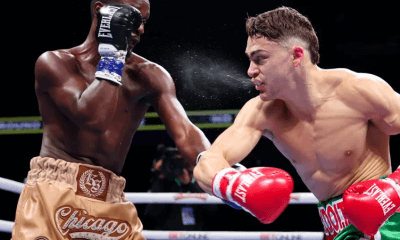
 Featured Articles2 weeks ago
Featured Articles2 weeks agoOscar Duarte and Regis Prograis Prevail on an Action-Packed Fight Card in Chicago
-
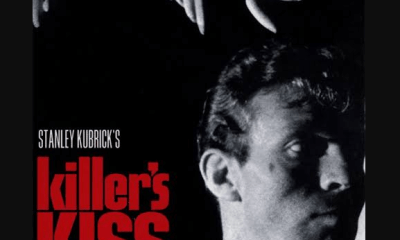
 Featured Articles1 week ago
Featured Articles1 week agoThe Hauser Report: Cinematic and Literary Notes
-
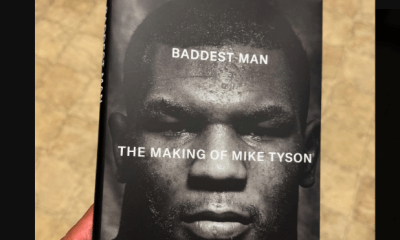
 Book Review5 days ago
Book Review5 days agoMark Kriegel’s New Book About Mike Tyson is a Must-Read
-
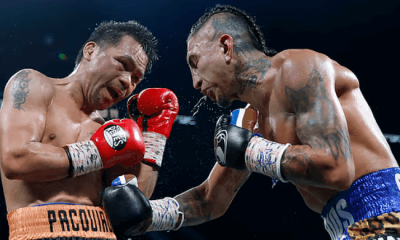
 Featured Articles4 weeks ago
Featured Articles4 weeks agoManny Pacquiao and Mario Barrios Fight to a Draw; Fundora stops Tim Tszyu
-
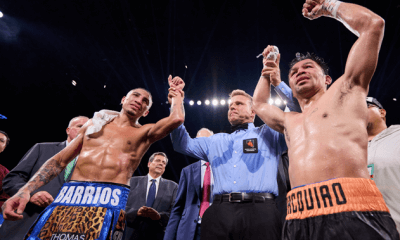
 Featured Articles4 weeks ago
Featured Articles4 weeks agoArne’s Almanac: Pacquiao-Barrios Redux
-

 Featured Articles3 weeks ago
Featured Articles3 weeks agoRemembering Dwight Muhammad Qawi (1953-2025) and his Triumphant Return to Prison
-
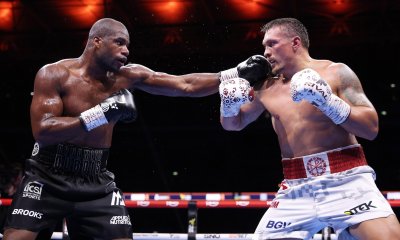
 Featured Articles4 weeks ago
Featured Articles4 weeks agoOleksandr Usyk Continues to Amaze; KOs Daniel Dubois in 5 One-Sided Rounds


